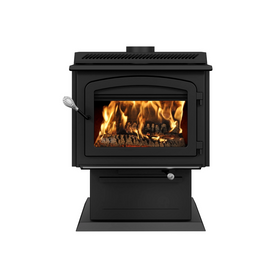Tobias Roberts

Pellet Stove
A heating appliance that burns pellets made of wood or other plant-based material to provide heat in your home. Pellets are purchased by the bag or in larger quantities. They are poured into a hopper, where they are automatically fed into the fire at a gradual rate for continuous heating. The pellets are made by compressing the fibers together under heat so that the natural lignin in the wood holds them together.
Look for an EPA certified pellet stove - EPA certification applies to pellet stoves as well as wood stoves, both considered wood heating appliances. Look at the EPA certified list to choose a high-efficiency model. Find a WETT certified installer (Wood Energy Technology Transfer), for correct and safe installation. Combustion gases must be reliably and safely vented. Note that a pellet stove usually requires a 120 Volt electrical connection to run the auger that feeds the pellets into the stove. This means that an outlet may need to be wired in. If you want to use the stove in a power outage, it will require a small backup battery power system or an uninterruptible power supply for the auger.
Pellet stoves use a renewable resource, in the form of wood or other fibres, some of which are directly from forest harvesting, and a portion of which can come from sawmill waste materials like wood chips and sawdust. A pellet stove can burn for longer with less frequent addition of fuel than a wood stove. The smoke from a pellet stove is, on average, cleaner in terms of air pollution than from a wood stove, because the fuel is more uniform and dry. However, smoke from a pellet stove still carries particulate matter and air pollutants that can be a concern in urban areas.
The use of fire has a very long history. Researchers recently discovered evidence of controlled use of fire by Homo Erectus, an ancestor of the human species, one million years ago. The 2012 discovery, in the Wonderwerk Cave in South Africa, pushed the origins of the use of fire 300,000 years earlier than previously thought.












